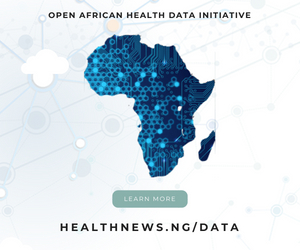No end in sight yet for DR Congo’s worsening Ebola virus disease outbreak
Latest report released by the World Health Organization (WHO) has revealed the Ebola virus disease outbreak in DR Congo is spreading and worsening.
According to the WHO, in recent weeks, the number of reported cases have increased. Furthermore, response teams have faced pockets of community mistrust even as the outbreak has also extended southwards to Kayina health zone, a high security risk area.
During the last 21 days (2 January – 22 January 2019), 102 new cases have been reported from 13 health zones, including: Katwa (62), Butembo (12), Oicha (6), Kayina (5), Beni (2), Manguredjipa (3), Kyondo (3), Kalungata (2), Komanda (1), Musienene (2), Biena (2), Mabalako (1), and Vuhovi (1).
As of 22 January 2019, there have been a total of 713 EVD cases (664 confirmed and 49 probable), including 439 deaths (overall case fatality ratio: 62%). 247 people have been discharged from Ebola Treatment Centres (ETCs), with many having enrolled in a dedicated program for monitoring and supporting survivors.
The current outbreak hotspots of Butembo and Katwa encompass an urban area with a population of approximately one million people. Of the 148 cases reported in Katwa to date, less than half (55/148) were registered as contacts at the time of illness onset.
Moreover, 10% (14/148) of these cases comprised of healthcare workers, and among those with available information, 42% (45/107) reported having attended a funeral in the weeks prior to illness onset. Collectively, these figures suggest that the observed increase in Katwa is being driven by a combination of both healthcare facility and community-based transmissions.
“Health protection and control measures such as infection prevention and control in health centers, vaccination for healthcare and other frontline workers, and safe and dignified burial practices, are being strengthened to interrupt the chains of transmission,” WHO stated.
Among cases with a reported age and sex, 59% (420/710) of cases were female, and 30% (214/708) were aged less than 18 years; including 108 infants and children under 5 years. Sixty-one healthcare workers have been infected to date.
In its risk assessment, WHO said the risk remains very high at the national and regional levels; the global risk level remains low. It however pointed out that this Ebola outbreak is affecting north-eastern provinces of the Democratic Republic of the Congo bordering Uganda, Rwanda and South Sudan.
“There is a potential risk for transmission of EVD at the national and regional levels due to extensive travel between the affected areas, the rest of the country, and neighbouring countries for economic and personal reasons as well as due to insecurity,” said WHO.
It is worthy to also note that DR Congo is concurrently experiencing other epidemics (e.g. cholera, vaccine-derived poliomyelitis, malaria), and a long-term humanitarian crisis. Additionally, the security situation in North Kivu and Ituri at times limits the implementation of response activities.

















